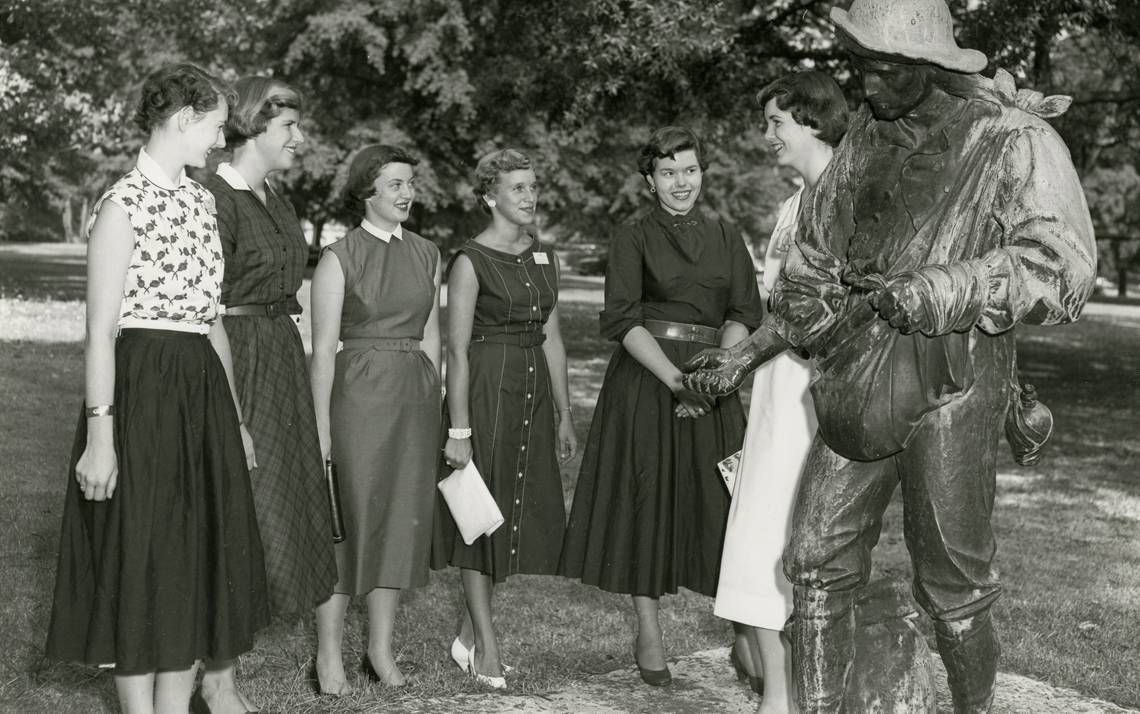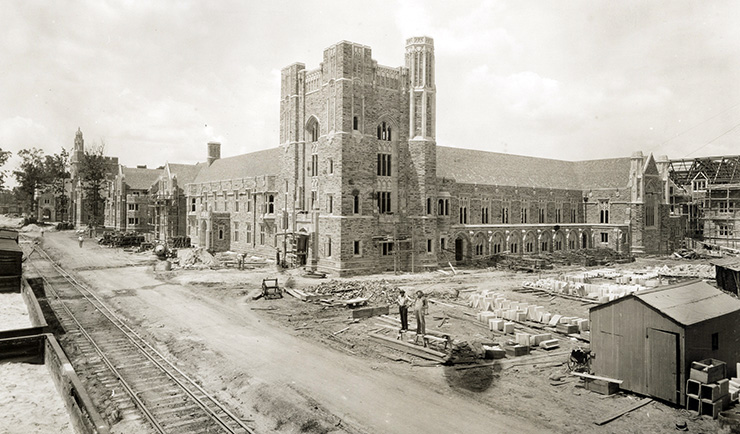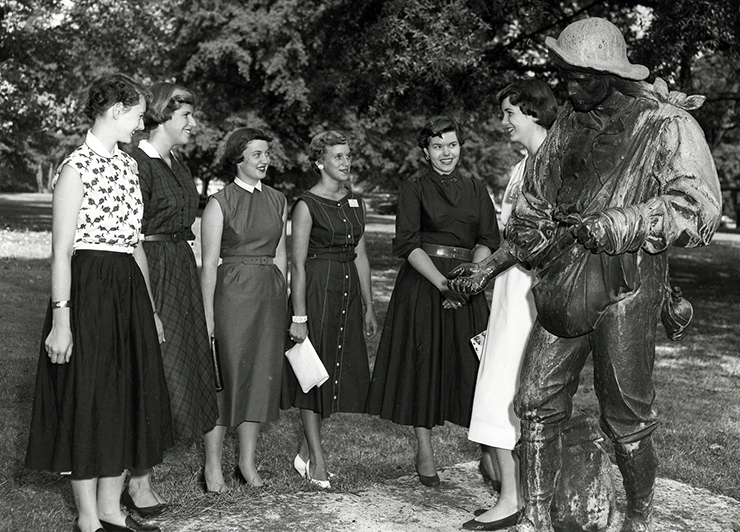Uncovering Duke’s Mysteries
From mist to a UNC seal, the stories and trivia behind campus unknowns

Across three campuses and 9,000 acres of land, there can be a lot to know about Duke.
Beyond the students, faculty and staff that make up its community, there are decades of information, from building histories to quirky trivia about iconic landmarks.
“Duke has been part of Durham for such a long time and it has its fair share of legends, rumors and mysteries,” said Val Gillispie, university archivist. “Whether etched in stone or circulated as stories, Duke is home to some amazing secrets.”
What are some of the modern day curiosities to know about? Working@Duke hunted down five unique details of campus to better understand.
Why is there mist outside Bryan Center?

Mist appears between May and September.
During discussions about the construction of The Plaza, Larry Moneta, vice president for student affairs, asked about the potential for a water fountain to act as a calming influence on the students and employees who use the space for studying, dining and meeting with friends. Costs would have been too high, so a mist “fountain” was chosen.
“It’s turned into a very cool asset, enabling cooling when needed, visually interesting fog when the humidity is high, and an extraordinarily fun mist for kids to run through,” Moneta said.
The system is enabled from 11 a.m. to midnight May through September, so long as the outdoor temperature is above 70 degrees. Nozzles below the Plaza surface filter impurities from city water, atomizing it as it passes through and flies into the air. There are also lights that turn on in the evening that illuminate the mist.
Who’s buried at Duke University Chapel?

A look at Duke Chapel's Crypt.
In the mid-1930s, Duke leadership added a Memorial Chapel and Crypt intended to act as a burial place for members of the Duke family and prominent people affiliated with the university.
Not far from the pews where services are held weekly, Washington Duke and his two sons, Benjamin N. Duke and James B. Duke, are entombed in the Memorial Chapel. Down below in the basement of the Chapel are five Duke dignitaries:
- William Preston Few, the first president of Duke University
- Nanaline Holt Duke, wife of James B. Duke
- Julian Deryl Hart, fourth president of Duke University
- Mary Hart, wife of Julian Deryl Hart
- Terry Sanford, sixth president of Duke University, governor of North Carolina, and U.S. Senator
Also in the crypt are the ashes of James A. Thomas, chairman of the Duke Memorial Association, James T. Cleland, former dean of Duke Chapel, and this wife, Alice M. Cleland.
The crypt has an altar, seats about 30 people and is used for prayer meetings and Bible studies.
Visit the Duke Chapel website for information about the Memorial Chapel and Crypt.
Is that UNC’s crest on a Duke building?

During construction of West Union, seals representing different universities were added to the building.
Nearly 100 years ago, when Duke first started constructing West Union, a collection of seals were adorned on the outside of the structure. According to a record by English professor William Blackburn in his 1939 book, “The Architecture of Duke University,” 35 seals were placed on the outside of the building, ranging from foreign colleges like the University of Cambridge and University of Paris to Ivy League schools Harvard, Yale and Princeton, as well as regional and local schools, including the University of North Carolina.
Blackburn’s book doesn’t provide a particular reason about why the seals were added and because contractors performed the carving, Duke doesn’t have a specific record of them, either. Amy McDonald, assistant university archivist, does have a theory.
“I’d presume someone connected to Duke gave them a list of shields to include on the Union, but we don’t have documentation on how that list was drawn up or how the selections were made,” she said. “But maybe they’re indicative of the young university’s ambitions.”
See a full list of seals in Blackburn’s book, which is available digitally here.
Is there something hiding in the woods?

There's a rumor specially-adorned rocks can be found in the woods behind Duke Chapel.
Nestled among the green trees, bushes and grass in the woods between Duke Chapel and the Teer Building is a rumored connection to a decades-old honorary society that once had a chapter at Duke.
As you wonder through the wooded area, prying eyes may spot a collection of rocks painted with shamrocks, a callout to the Order of St. Patrick, a engineering society that was started in 1908 at the University of Missouri. Faculty there celebrated the 5th century saint due to a presumed connection to engineering through his Roman education.
According to records at the Pratt School of Engineering, Duke community members started their own Order in 1945. The “secret” society no longer exists at Duke, but remnants may remain, hidden in the woods.
Find out the connection between St. Patrick and engineering with this detailed history.
What’s the determined looking statue on East Campus?

Duke students gather around The Sower on East Campus in 1954.
Placed near the entrance to the East Duke Building in November 1914, “The Sower” is the only statue on campus that doesn’t depict a member of the Duke family or historical figure related to the university. It’s physical connection, however, dates back to its placement at James B. Duke’s estate in New Jersey before it was brought to its current spot in Durham.
John Kilgo, a former president of Trinity College, which later became Duke University, requested the statue in part because he thought the "strength and nobleness of face and the strong arm with which the laborer faced his daily toil" would inspire students.
The Sower also takes on a light-hearted history. Once females enrolled at Duke through the Women’s College, they were permitted three “dates” a week, but men and women could walk across areas of campus without it counting as a defined “date.” According to University Archives, “The Sower acquired the role of cupid as couples began placing pennies in his hand and claiming a kiss from their partner if the pennies were gone upon return.”
Learn more about the history of The Sower at the Archives website.